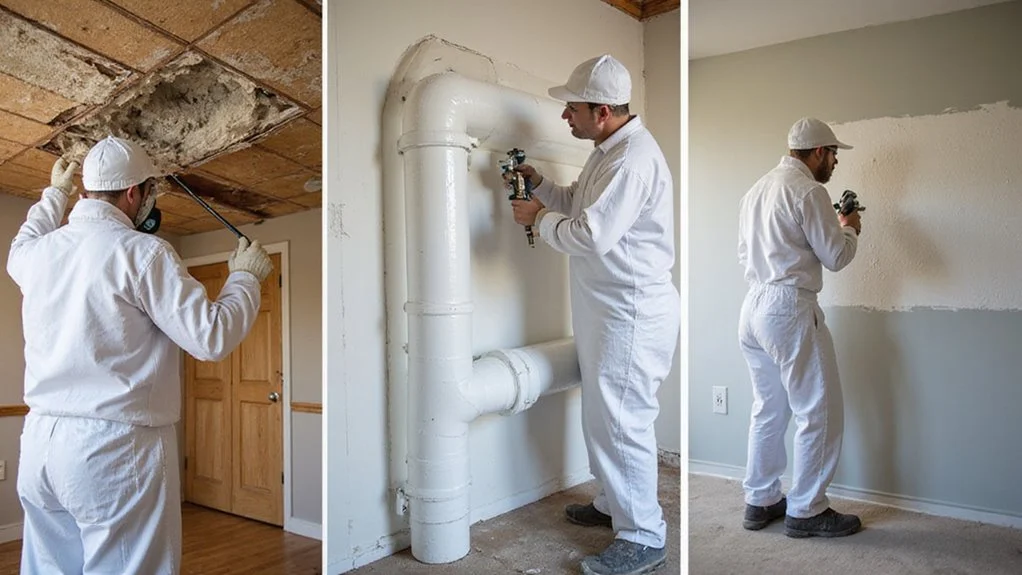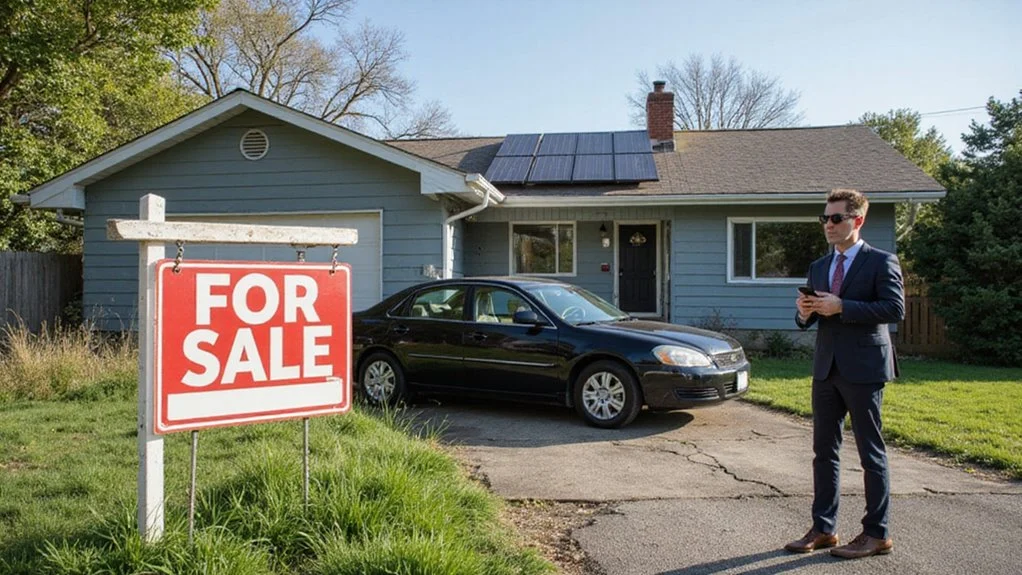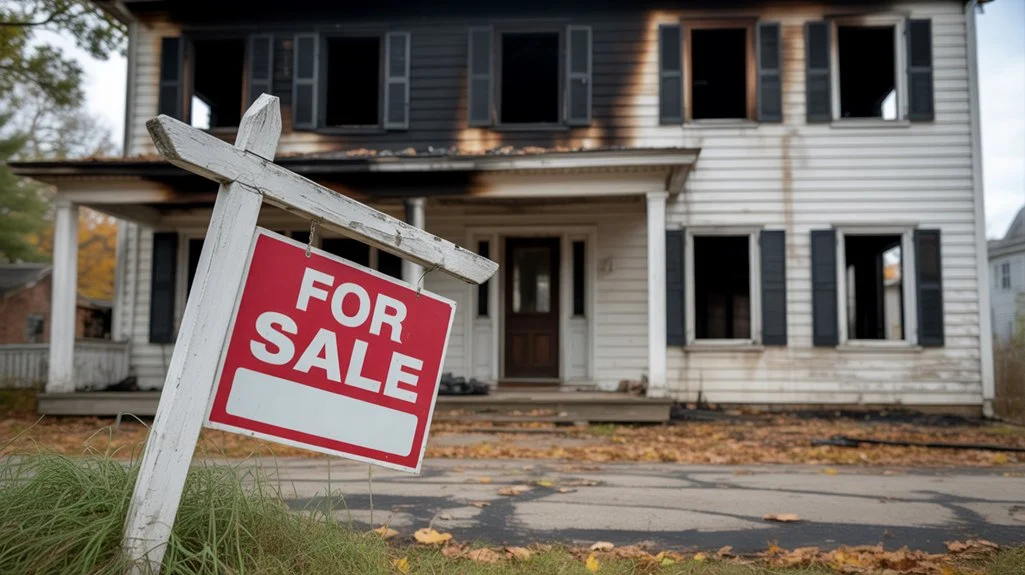When Alex T. discovered his Austin home contained asbestos during a pre-sale inspection, he faced the daunting reality of costly remediation or significant price reductions to attract buyers.
Uncertain about his options for selling a house with this hazardous material, Alex contacted Better House Buyers who promptly assessed his property and presented a fair cash offer within 24 hours.
Unlike traditional buyers who balked at the asbestos disclosure, Better House Buyers specialized in purchasing properties with such challenges “as-is,” eliminating Alex’s need for expensive testing or remediation.
Within two weeks, Alex closed on his timeline and walked away from his asbestos concerns, demonstrating that selling a house with asbestos is indeed possible with the right buyer.
Key Points
- Yes, you can legally sell a house with asbestos, but disclosure requirements vary by state and jurisdiction.
- Professional asbestos testing and documentation provide essential liability protection and transparency for potential buyers.
- Remediation options include removal, encapsulation, or enclosure, with costs varying based on material condition and method chosen.
- Price strategically by researching comparable homes and deducting estimated abatement costs from market value.
- Consider selling “as-is” to cash buyers or investors who accept properties with hazardous materials.
Legal Requirements and Disclosure Obligations When Selling Homes With Asbestos
When you’re selling a house with asbestos, understanding your legal disclosure obligations isn’t just smart—it’s absolutely critical to protecting yourself from costly lawsuits and legal headaches down the road. Federal law doesn’t mandate asbestos disclosure, but states like California have strict disclosure requirements. You’ll need to complete a Real Estate Transfer Disclosure Statement (TDS) if you’re selling residential properties with four units or fewer. California specifically requires declaring asbestos-containing materials in pre-1979 homes, regardless of condition. Your seller obligations vary by jurisdiction—some states only require disclosure if you’re already aware of asbestos presence. Don’t gamble with transparency. Asbestos was once considered a miracle mineral for fireproofing before its serious health risks became widely known. Verify your local laws immediately and disclose everything you know to avoid devastating legal consequences.
Professional Testing and Documentation for Asbestos-Containing Materials
Getting professional asbestos testing isn’t optional—it’s your shield against liability and the key to an honest, successful sale. You’ll need licensed inspectors who follow strict safety regulations to conduct thorough visual inspections and collect multiple bulk samples from suspect materials.
| Survey Type | Scope | Best For |
|---|---|---|
| Limited | Basic visual inspection | Quick assessments |
| Pre-Renovation | Targeted areas of work | Specific projects |
| Pre-Demolition | Destructive sampling | Complete removal |
Certified labs analyze your samples using polarized light microscopy or transmission electron microscopy for precise results. Your inspector’s extensive report details every finding, sampling method, and laboratory result—creating bulletproof documentation for buyers and protecting you legally. Verify that your inspection firm carries adequate professional liability insurance to protect against potential damages from errors or omissions. This professional asbestos testing transforms uncertainty into confidence, making your sale smooth and transparent.
Remediation Options: Removal, Encapsulation, and Enclosure Methods

Once you’ve confirmed asbestos in your home, you’ll face three proven remediation paths that can transform your property from a liability into a sellable asset.
Removal completely eliminates asbestos-containing materials but carries the highest remediation costs due to labor intensity and disposal fees. You’ll need temporary relocation, but you’ll achieve total hazard elimination. This method increases property value and ensures full regulatory compliance.
Encapsulation seals asbestos fibers with protective coating, offering a budget-friendly alternative that’s faster than removal. This asbestos safety method works best for intact materials but requires ongoing monitoring.
Enclosure builds airtight barriers around asbestos materials using drywall or plywood. It’s your most cost-effective option when removal isn’t feasible.
Your choice depends on material condition, budget constraints, and renovation plans. Damaged materials demand removal, while intact asbestos can use containment methods.
Pricing Strategies and Negotiating With Potential Buyers
Your remediation plan sets the foundation, but smart pricing strategy will make or break your sale. Start your asbestos valuation by researching comparable homes with similar issues and deducting estimated abatement costs from your asking price. Target cash buyers who’ll accept “as-is” conditions and fewer contingencies—they’re your best bet for closing quickly.
Master these negotiation tactics: disclose asbestos upfront to build trust, present multiple abatement quotes showing you’ve done your homework, and offer closing credits instead of lowering your list price. Be ready for buyers to request reductions equal to remediation estimates. In seller’s markets, you’ll have more pricing power. In buyer’s markets, competitive pricing becomes essential. Stay flexible—your willingness to negotiate can expedite the sale considerably. Additionally, conducting thorough property evaluations can help you understand the full scope of necessary repairs and enhance your pricing strategy.
Alternative Selling Approaches for Asbestos-Containing Properties

When traditional selling methods feel overwhelming, alternative approaches can reveal new opportunities for your asbestos-containing property. You can sell as-is to investors who specialize in fixer-uppers and handle their own remediation. This saves you thousands in abatement costs while attracting cash buyers ready for quick closings.
Your marketing strategies should target renovation contractors and experienced investors who see opportunity where others see obstacles. Use online platforms and iBuyer services that work with hazardous material properties. Focus your investor outreach on highlighting development potential and tax benefits rather than dwelling on limitations. Additionally, consulting a real estate expert can provide guidance on the most beneficial sale type and necessary legal advice for a smooth process.
Consider professional remediation before listing if you want broader market appeal. Either way, maintain full transparency with proper inspections and disclosure documentation. The right buyer exists for your property.
Common Questions
What Health Risks Does Asbestos Exposure Pose to My Family?
Asbestos health risks include mesothelioma, lung cancer, and asbestosis from family exposure through contaminated clothing and household dust. You’re facing decades-long latency periods before symptoms appear, making early detection essential.
How Can I Identify Asbestos Materials in My Home Myself?
While DIY inspection seems manageable, you can’t reliably identify asbestos materials yourself since fibers are microscopic. Professional asbestos testing is essential because DIY kits pose risks and may provide incomplete results.
Does Homeowner’s Insurance Cover Asbestos Removal or Related Damages?
Your standard homeowner’s insurance typically won’t cover asbestos removal unless it’s disturbed during a covered event like fire or storm damage. Review your asbestos coverage options and consult your agent about potential insurance claims scenarios.
Will Having Asbestos Affect My Home’s Property Tax Assessment?
Asbestos presence won’t automatically reduce your property tax assessment unless contamination’s severe. Tax implications depend on documented remediation costs and professional evaluations. Assessors rarely adjust asbestos valuation without extreme contamination requiring significant abatement expenses.
Can I Live in My House During Asbestos Remediation Work?
You shouldn’t live in your house during asbestos remediation work. The remediation process creates airborne fibers that compromise asbestos safety. Contractors need unrestricted access, and you’ll risk serious health issues from fiber exposure.
Final Thoughts
Selling a home with asbestos is entirely possible, though it requires proper disclosure, professional testing, and careful consideration of remediation options. Many homeowners struggle with the stress and uncertainty of selling properties with known asbestos issues, concerned about potential buyer reactions and negotiation challenges. Better House Buyers offers a straightforward solution by purchasing homes in as-is condition, providing offers within 24 hours and closing on your preferred timeline, even with asbestos present. If you’re facing the challenge of selling a house with asbestos and want to avoid the complications of testing, remediation, or price negotiations, [Better House Buyers](https://betterhousebuyers.com/) can help you move forward quickly without the typical selling hurdles.
References
- https://www.sensitiveenvironmental.com/california-asbestos-real-estate-disclosure/
- https://osbornehomes.com/can-you-sell-a-house-with-asbestos-in-california/
- https://www.pezonproperties.com/selling-a-house-with-asbestos
- https://www.homelight.com/blog/selling-a-house-with-asbestos/
- https://www.epa.gov/asbestos/does-home-seller-have-disclose-potential-buyer-home-contains-asbestos-what-about
- https://www.airpf.com/what-to-expect-during-asbestos-inspection/
- https://www.partneresi.com/resources/articles/what-is-an-asbestos-survey/
- https://www.asbestosprojectmanagement.com/services/asbestos-in-real-estate/
- https://www.epa.gov/sites/default/files/documents/asbestosfaqs_0.pdf
- https://www.mesotheliomahub.com/mesothelioma/asbestos/how-to-identify-asbestos/asbestos-testing/


